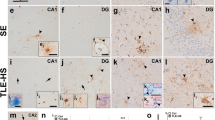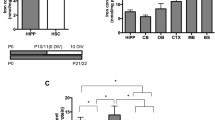Abstract
Previous clinical and experimental studies have shown that neurological decline and poor functional outcome after acute ischemic stroke in humans are associated with high ferritin levels in serum and cerebrospinal fluid (CSF) within 24 h of ischemic stroke onset. The aim of the present study was to find out if and how high extracellular ferritin concentrations can increase the excitotoxicity effect in a neuronal cortical culture model of stroke. Extracellular ferritin (100 ng/ml) significantly increased the excitotoxic effect caused by excessive exogenous glutamate (50 μM and 100 μM) by leading to an increase in lipid peroxidation, a reduction in mitochondrial membrane potential, and a decrease in neuron viability. Extracellular apoferritin (100 ng/ml), the iron-free form of the protein, does not increase the excitotoxicity of glutamate, which proves that iron was responsible for the neurotoxic effect of the exogenous ferritin. We present evidence that extracellular ferritin iron exacerbates the neurotoxic effect induced by glutamate excitotoxicity and that the effect of ferritin iron is dependent of glutamate excitotoxicity. Our results support the idea that body iron overload is involved in the severity of the brain damage caused by stroke and reveal the need to control systemic iron homeostasis.




Similar content being viewed by others
References
Arosio P, Levi S (2010) Cytosolic and mitochondrial ferritins in the regulation of cellular iron homeostasis and oxidative damage. Biochim Biophys Acta 1800(8):783–792. https://doi.org/10.1016/j.bbagen.2010.02.005
Arosio P, Ingrassia R, Cavadini P (2009) Ferritins: a family of molecules for iron storage, antioxidation and more. Biochim Biophys Acta 1790(7):589–599. https://doi.org/10.1016/j.bbagen.2008.09.004
Bou-Abdallah F (2010) The iron redox and hydrolysis chemistry of the ferritins. Biochim Biophys Acta 1800(8):719–731. https://doi.org/10.1016/j.bbagen.2010.03.021
Broughton BRS, Reutens DC, Sobey CG (2009) Apoptotic mechanisms after cerebral ischemia. Stroke 40(5):e331–e339. https://doi.org/10.1161/STROKEAHA.108.531632
Brouns R, De Deyn PP (2009) The complexity of neurobiological processes in acute ischemic stroke. Clin Neurol Neurosurg 111(6):483–495. https://doi.org/10.1016/j.clineuro.2009.04.001
Carbonell T, Rama R (2007) Iron, oxidative stress and early neurological deterioration in ischemic stroke. Curr Med Chem 14:857–874. https://doi.org/10.2174/092986707780363014
Castellanos M, Puig N, Carbonell T, Castillo J, Martinez JM, Rama R, Dávalos A (2002) Iron intake increases infarct volume after permanent middle cerebral artery occlusion in rats. Brain Res 952:1–6. https://doi.org/10.1016/S0006-8993(02)03179-7
Chung J-W, Ryu W-S, Kim BJ, Yoon B-W (2015) Elevated calcium after acute ischemic stroke: association with a poor short-term outcome and long-term mortality. J Stroke 17(1):54–59. https://doi.org/10.5853/jos.2015.17.1.54
Coimbra-Costa D, Alva N, Duran M, Carbonell T, Rama R (2017) Oxidative stress and apoptosis after acute respiratory hypoxia and reoxygenation in rat brain. Redox Biol 12:216–225. https://doi.org/10.1016/j.redox.2017.02.014
Dávalos A, Castillo J, Marrugat J, Fernandez-Real JM, Armengou A, Cacabelos P, Rama R (2000) Body iron stores and early neurologic deterioration in acute cerebral infarction. Neurology 54(8):1568–1574. https://doi.org/10.1212/wnl.54.8.1568
Ding H, Yan CZ, Shi H, Zhao YS, Chang SY, Yu P, Wu WS, Zhao CY, Chang YZ, Duan XL (2011) Hepcidin is involved in iron regulation in the ischemic brain. PLoS One 6(9):e25324. https://doi.org/10.1371/journal.pone.0025324
Donnan GA, Fisher M, Macleod MDS (2008) Stroke. Lancet. 371(9624):1612–1623. https://doi.org/10.1016/S0140-6736(08)60694-7.12
Dringen R, Kussmaul L, Hamprecht B (1998) Detoxification of exogenous hydrogen peroxide and organic hydroperoxides by cultured astroglial cells assessed by microtiter plate assay. Brain Res Brain Res Protocol 2(3):223–228. https://doi.org/10.1016/s1385-299x(97)00047-0
Fraser PA (2011) The role of free radical generation in increasing cerebrovascular permeability. Free Radic Biol Med 51(5):967–977. https://doi.org/10.1016/j.freeradbiomed.2011.06.003
Hagen WR, Hagedoorn PL, Honarmand Ebrahimi K (2017) The workings of ferritin: a crossroad of opinions. Metallomics. 9(6):595–605. https://doi.org/10.1039/c7mt00124j
Körper S, Nolte F, Rojewski MT, Thiel E, Schrezenmeier H (2003) The K+channel openers diazoxide and NS1619 induce depolarization of mitochondria and have differential effects on cell Ca2+in CD34+cell line KG-1a. Exp Hematol 31(9):815–823. https://doi.org/10.1016/S0301-472X(03)00199-1
Krisanova N, Sivko R, Kasatkina L, Borуsov A, Borisova T (2014) Excitotoxic potential of exogenous ferritin and apoferritin: changes in ambient level of glutamate and synaptic vesicle acidification in brain nerve terminals. Mol Cell Neurosci 58:95–104. https://doi.org/10.1016/j.mcn.2013.12.002
MacDougall G, Anderton RS, Mastaglia FL, Knuckey NW, Meloni BP (2019) Mitochondria and neuroprotection in stroke: cationic arginine-rich peptides (CARPs) as a novel class of mitochondria-targeted neuroprotective therapeutics. Neurobiol Dis 121:17–33. https://doi.org/10.1016/j.nbd.2018.09.010
Morris G, Berk M, Carvalho AF, Maes M, Walker AJ, Puri BK (2018) Why should neuroscientists worry about iron? The emerging role of ferroptosis in the pathophysiology of neuroprogressive diseases. Behav Brain Res 341:154–175. https://doi.org/10.1016/j.bbr.2017.12.036
Moskowitz MA, Lo EH, Iadecola C (2010) The science of stroke: mechanisms in search of treatments. Neuron. 67(2):181–198. https://doi.org/10.1016/j.neuron.2010.07.002
Reif DW (1992) Ferritin as a source of iron for oxidative damage. Free Radic Biol Med 12:417–427. https://doi.org/10.1016/0891-5849(92)90091-t
Reif DW, Simmons RD (1990) Nitric oxide mediates iron release from ferritin. Arch Biochem Biophys 283:537–541. https://doi.org/10.1016/0003-9861(90)90680-w
Smiley ST, Mottola-Hartshorn C, Smith TW, Reers M, Chen A, Chen LB, Lin M, Steele GD (2006) Intracellular heterogeneity in mitochondrial membrane potentials revealed by a J-aggregate-forming lipophilic cation JC-1. Proc Natl Acad Sci 88(9):3671–3675. https://doi.org/10.1073/pnas.88.9.3671
Tymianski M (2011) Emerging mechanisms of disrupted cellular signaling in brain ischemia. Nat Neurosci 14(11):1369–1373. https://doi.org/10.1038/nn.2951
Uchiyama M, Mihara M (1978) Determination of malondialdehide precursor in tissues by thiobarbituric acid test. Anal Biochem 86:271–278. https://doi.org/10.1016/0003-2697(78)90342-1
Van der A DL, Grobbee DE, Roest M, JJM M, Voorbij HA, Van Der Schouw YT (2005) Serum ferritin is a risk factor for stroke in postmenopausal women. Stroke 36:1637–1641. https://doi.org/10.1161/01.STR.0000173172.82880.72
Ward MW, Rego AC, Frenguelli BG, Nicholls DG (2000) Mitochondrial membrane potential and glutamate excitotoxicity in cultured cerebellar granule cells. J Neurosci 20(19):7208–7219. https://doi.org/10.1523/JNEUROSCI.20-19-07208.2000
Wolff B, Volzke H, Ludemann J, Robinson D, Vogelgesang D, Staudt A, Kessler JC, Dahm JB, John U, Felix SB (2004) Association between high serumferritin levels and carotid atherosclerosis in the Study of Health in Pomerania (SHIP). Stroke. 35:453–457. https://doi.org/10.1161/01.STR.0000114875.31599.1C
Worwood M (1987) The diagnostic value of serum ferritin determinations for assessing iron status. Haematologia 20:229–235
Zecca L, Youdim MB, Riederer P, Connor JR, Crichton R (2004) Iron, brain ageing, and neurodegeneratives disorders. Nat Rev Neurosci 5:863–873. https://doi.org/10.1038/nrn1537
Acknowledgements
We acknowledge Mr Cristopher Evans for language assistance.
Author information
Authors and Affiliations
Contributions
The authors declare that all data were generated in-house and that no paper mill was used.
Corresponding authors
Ethics declarations
Informed consent
All experimental procedures (approval number #9431) were carried out following the guidelines of the Committee for the Care of Research Animals of the University of Barcelona, in accordance with European directive (2010/63 and 86/609/EEC).
Conflict of interest
The authors declare no competing interests.
Additional information
Publisher’s note
Springer Nature remains neutral with regard to jurisdictional claims in published maps and institutional affiliations.
Key points
Extracellular ferritin increases glutamate excitotoxicity in neuronal cultures.
Patients at risk of cerebral stroke should take care of systemic iron level.
Rights and permissions
About this article
Cite this article
Gámez, A., Alva, N., Carbonell, T. et al. Extracellular ferritin contributes to neuronal injury in an in vitro model of ischemic stroke. J Physiol Biochem 77, 539–545 (2021). https://doi.org/10.1007/s13105-021-00810-3
Received:
Accepted:
Published:
Issue Date:
DOI: https://doi.org/10.1007/s13105-021-00810-3




